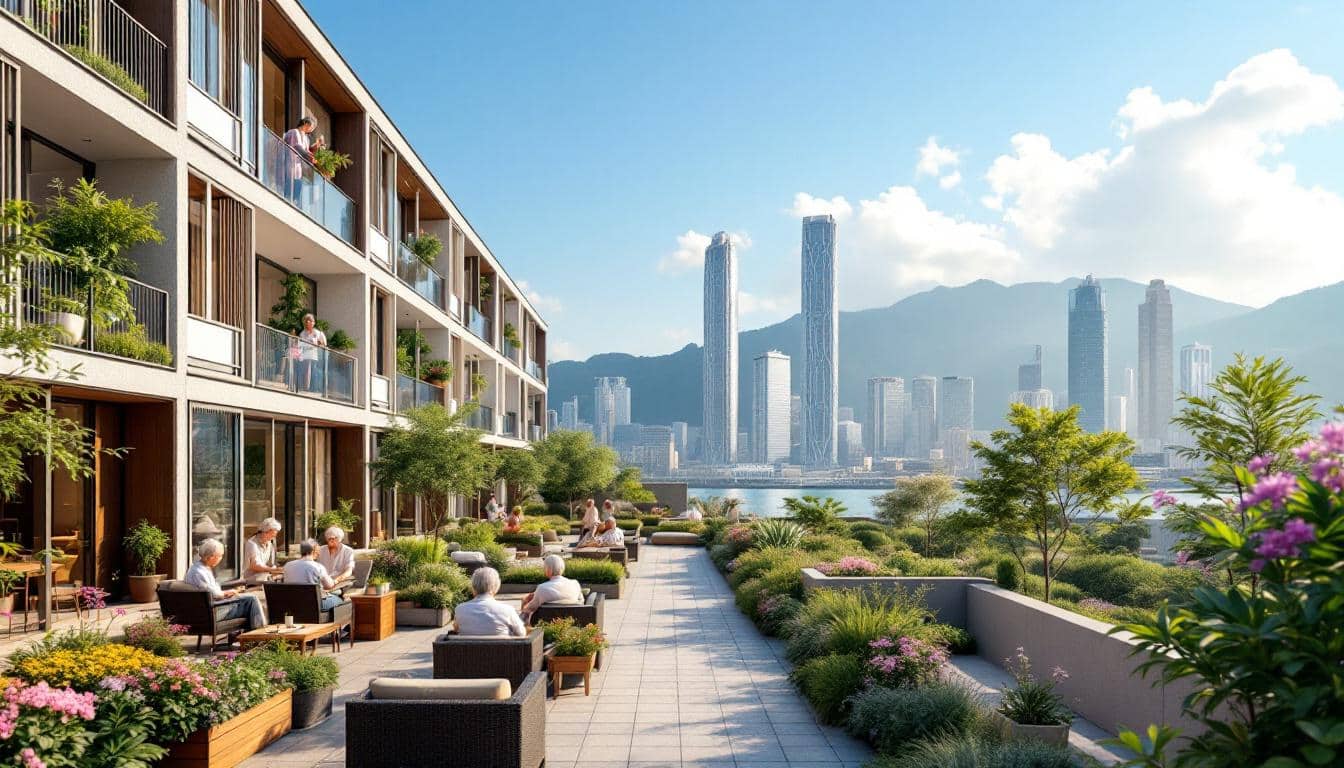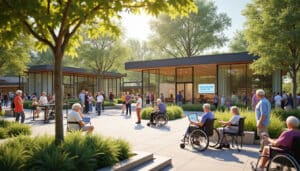Welcome to our platform where your experience is at the heart of our concerns. The use of cookies allows us to offer you reliable and secure services. Make the choice that suits you for managing your personal data.
We monitor for outages and protect against spam, fraud, and abuse through these tools. By accepting all options, you contribute to the development of new services and the effectiveness of targeted advertising. If you prefer to refuse, we will limit ourselves to presenting non-personalized content based on your current activity and location. To adjust your preferences, explore the various options available in your privacy settings.

Suitable housing for the elderly: a lever for Hong Kong’s silver economy
As the global population ages, Hong Kong stands at a crucial crossroads to support its aging population. Adapting housing to meet the specific needs of seniors could not only improve their quality of life but also propel the silver economy of the city. This dynamic opens promising economic prospects while addressing a major societal issue.
Why is the silver economy essential for Hong Kong?
The silver economy refers to economic activities related to the elderly. In Hong Kong, this economy represents a rapidly growing segment given the swift aging of the population. According to a IMF analysis, the silver economy offers significant opportunities to stimulate growth, particularly in sectors such as real estate, healthcare, and leisure services.
With a growing proportion of elderly residents, it becomes imperative to develop tailored infrastructure and services. This includes not only specific housing but also healthcare, leisure, and mobility services that meet the expectations and needs of this population. By investing in the silver economy, Hong Kong can not only address demographic challenges but also create a sustainable growth source.
What are the specific housing needs for the elderly?
Housing adapted for the elderly must meet several essential criteria to ensure comfort, safety, and accessibility. Among these criteria are:
- Accessibility: Features such as ramps, adapted elevators, and accessible toilets are essential.
- Safety: Installation of security systems, adequate lighting, and absence of potential hazards are crucial to prevent domestic accidents.
- Comfort: Spacious, well-ventilated, and soundproof living spaces contribute to a better quality of life.
- Proximity to services: Proximity to healthcare centers, shops, and leisure spaces is crucial to foster residents’ autonomy.
A housing facility is a typical example of a structure meeting these needs. These establishments not only offer adapted housing but also support services, allowing elderly individuals to live independently while having access to necessary assistance when needed.
How can suitable housing stimulate the local economy?
Adapting housing for the elderly brings about a series of positive effects on the local economy. First, the construction and renovation of suitable housing create numerous jobs in the construction, architecture, and property management sectors. Furthermore, services associated with these housing units, such as maintenance, home healthcare, and leisure services, generate new business opportunities.
Moreover, a well-housed and supported elderly population is more likely to consume products and services, thereby stimulating local purchasing power. Additionally, investments in suitable housing infrastructure contribute to the property value enhancement in the respective neighborhoods, attracting new residents and investors.
The trade shows in Hong Kong, for example, are starting to focus on this dynamic, recognizing the considerable economic potential it represents. By supporting the silver economy, Hong Kong can diversify its economy and reduce its dependence on other traditional sectors.
What are the current initiatives and recommendations for the future?
Hong Kong has already initiated several projects aimed at improving housing quality for the elderly. Among these initiatives, collaborations with non-governmental organizations for the construction of modern housing facilities and well-equipped homes are notable. These projects aim to provide integrated housing solutions, combining residence and support services.
To succeed, it is essential to unite ambitions and efforts at the departmental level. This involves effective coordination between different governmental sectors, private enterprises, and community organizations. By working together, these entities can develop holistic strategies that meet the needs of the elderly while promoting economic growth.
Furthermore, it is recommended to encourage innovation in the design of housing and associated services. Utilizing smart technologies can enhance the effectiveness of home healthcare services, facilitate communication between residents and their support network, and create safer and more comfortable living environments.
What are the long-term benefits of such an initiative?
Investing in suitable housing for the elderly offers numerous advantages in the long term. On one hand, it contributes to a better quality of life for seniors, by providing them with a safe, comfortable, and stimulating living environment. A healthy and well-supported elderly population is also more productive, which can translate into increased participation in various economic sectors.
On the other hand, these initiatives can reduce costs related to healthcare and social assistance. By promoting the autonomy of the elderly, reliance on expensive care institutions is diminished, while encouraging more active and engaged lifestyles. This also helps to create a more inclusive society where the needs of all citizens are considered and respected.
In the long term, a thriving silver economy can serve as a model for other regions facing similar challenges. The successes achieved in Hong Kong could inspire similar policies and initiatives elsewhere, contributing to a global shift in how societies manage their aging populations.
How can citizens contribute to this dynamic?
The role of citizens is crucial in realizing this vision. Everyone can contribute by becoming informed about the needs of the elderly and supporting local initiatives aimed at improving their living conditions. Participating in volunteer programs, supporting local businesses that develop suitable solutions, or promoting policies favorable to the development of the silver economy are all concrete ways to get involved.
Moreover, it is important to foster a culture of respect and inclusion towards the elderly. By valuing their experience and recognizing their contributions to society, a more harmonious and supportive environment can be created. This can also encourage younger generations to take more interest in aging-related issues, ensuring continuity in efforts to support this population.
Finally, citizens can exert their influence by actively participating in public discussions and making their voices heard on the policies to be implemented. By mobilizing collectively, they can encourage decision-makers to take the necessary measures to develop suitable housing solutions and support Hong Kong’s silver economy.
What is the importance of intersectoral collaboration?
The success of adapting housing for the elderly relies on close collaboration among different sectors. Governments, private enterprises, non-governmental organizations, and local communities must work together to design and implement effective strategies. This intersectoral synergy allows for the combination of resources, expertise, and innovations necessary to address the complex challenges related to population aging.
For example, public-private partnerships can facilitate the development of suitable housing projects by combining public financing with the efficiency and innovation of the private sector. Similarly, non-governmental organizations can play a key role by providing support services and raising public awareness of the issues surrounding aging.
Furthermore, intersectoral collaboration fosters a holistic approach, taking into account all aspects of the lives of elderly individuals, from their housing to their health and social well-being. This ensures that the solutions implemented are integrated and sustainable, genuinely meeting the needs of the target population.
Finally, this collaboration helps create a strong and adaptable support network capable of facing demographic changes and new challenges that may arise. By adopting a coordinated and inclusive approach, Hong Kong can ensure harmonious growth of its silver economy while ensuring the well-being of its elderly citizens.











